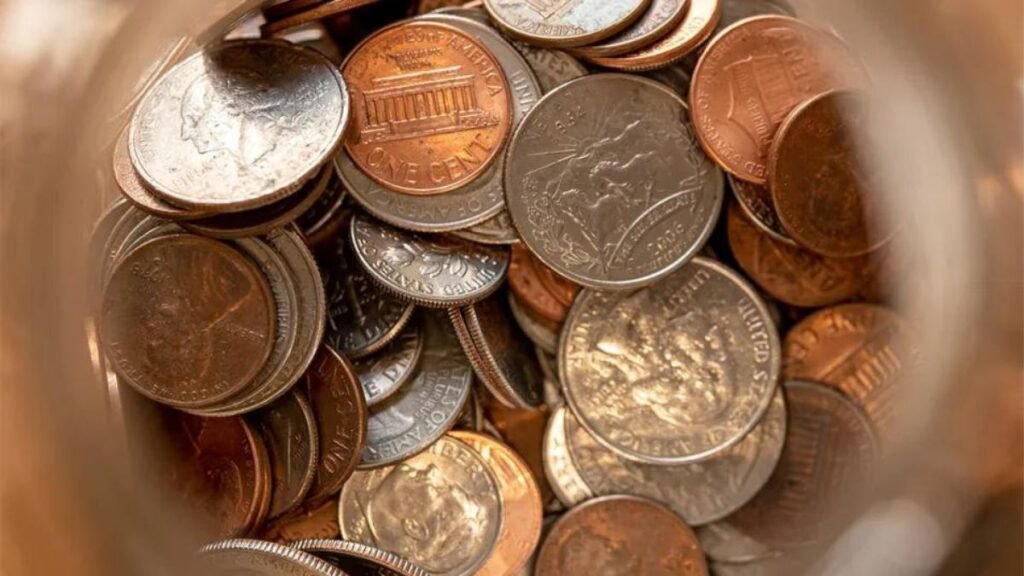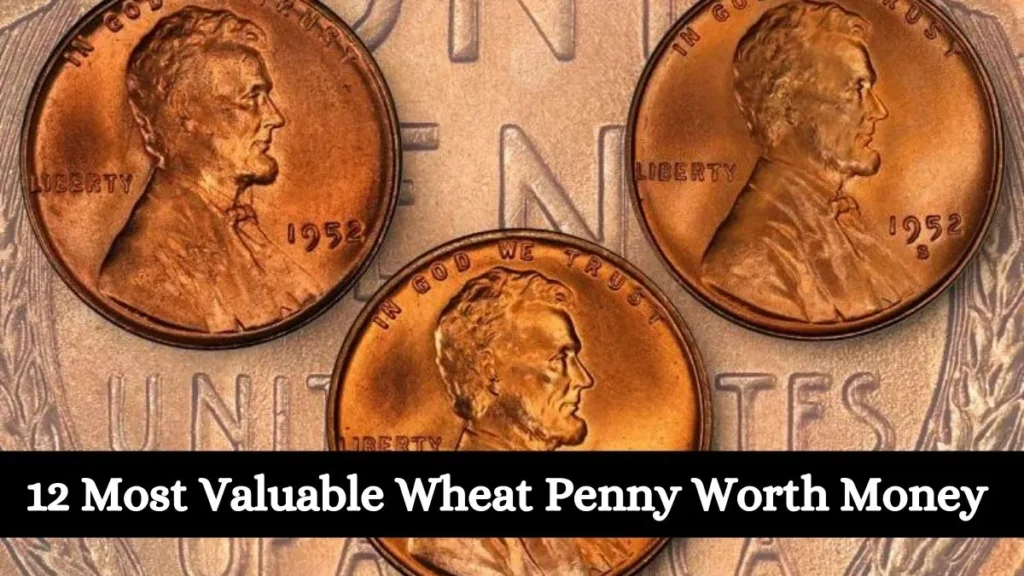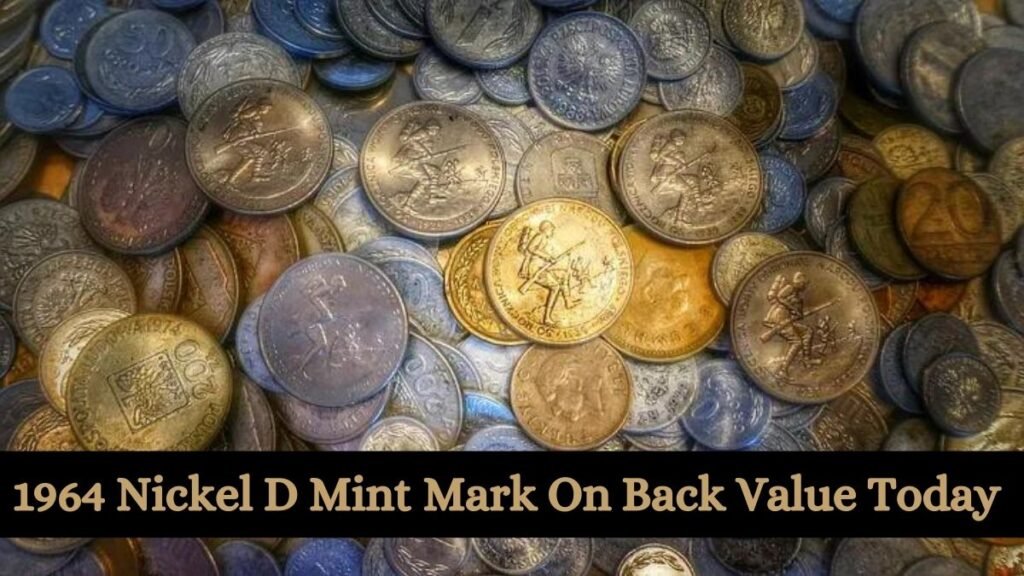14 Most Valuable Jefferson Nickel Errors and Varieties List
Have you stumbled upon an ancient, peculiar nickel and found yourself wondering if it holds any value beyond its five-cent face?
The United States Mint has been churning out 5-cent nickels since 1866, with the more recent Jefferson Nickel Errors and Varieties List taking the spotlight since 1938.
Now, here’s the truth: most folks don’t give nickels a second thought when it comes to value. Typically, they’re seen as nothing more than pocket change. But, hold on – there’s a twist! Among these seemingly ordinary coins hide nickel errors, and these errors could be your ticket to a small fortune.
With many old nickels no longer in circulation, rarity kicks in. Yet, it’s the nickels flaunting unique errors that are the true treasures – rare and astonishingly valuable.
So, in this exploration of nickel errors, we’re on a quest to uncover the cream of the crop. By the end, you’ll be equipped to sift through your pocket change and identify those elusive nickels that might just be worth more than you think.
Related 12 Most Valuable Wheat Penny Worth Money
Jefferson Nickel Errors and Varieties List
1. 1937-D Three Legs Buffalo Nickel

The 1937-D Buffalo nickel stands out as one of the most sought-after modern nickels. It continues to captivate collectors today, much like it did when it was first introduced.
In the years spanning 1937 to 1938, collectors actively pulled these nickels out of circulation, eagerly searching for the elusive missing three legs error.
The name of this coin derives from the distinctive feature on the reverse side: the Buffalo is portrayed with three legs missing, yet the hooves remain intact. Because the Mint ceased production of the Buffalo nickel, finding this coin in circulated condition is already a challenge, and it becomes even scarcer in mint state or gem condition.
Mint state examples of this nickel exhibit a fine luster and a frosty appearance. The absence of three legs is attributed to the use of over-polished dies during the minting process.
Illustrating its desirability among collectors, a specific specimen graded as MS66 fetched an impressive $99,875 at a Legend Rare Coins Auction in 2021.
This serves as a testament to the rarity and value that the 1937-D Three Legs Buffalo Nickel holds in the world of numismatics.
Related These Nickels Are Worth a Fortune! You Won’t Believe
2. 1935 Doubled Die Reverse Buffalo Nickel

1935 marks the sole year within the entire Buffalo nickel series to feature a significant doubled die reverse error, underscoring the rarity and uniqueness of this coin.
Given that the Mint has ceased its issuance, finding circulated examples of this nickel is a challenge, and the majority of those available are in lower grades, consequently not holding substantial value. The uncirculated variety is even scarcer.
The doubling effect is most prominent around the motto “E PLURIBUS UNUM” and the words “FIVE CENTS” on the reverse side of the coin.
It’s worth noting that there are two distinct varieties of the 1935 Buffalo nickel with a doubled die reverse: Type 1 and Type 2. Type 1 exhibits more pronounced doubling, thereby commanding a higher value among collectors.
Highlighting its rarity, the most expensive known example, graded as MS64, went under the hammer for a remarkable $104,650 in a 2007 auction.
This price tag underscores the premium placed on the 1935 Doubled Die Reverse Buffalo Nickel within the numismatic community.
3. 1964 SMS Jefferson Nickel

In 1964, the U.S. Mint introduced a unique offering by including a Jefferson nickel in a special mint set. Unlike regular Jefferson nickels, these special strike coins were intentionally kept out of circulation, adding an element of rarity to their existence.
Remarkably scarce, there are fewer than two dozen 1964 SMS (Special Mint Set) Jefferson nickels known to exist. The circumstances surrounding the production of these special strikes remain a mystery, adding an air of intrigue to their history.
Interestingly, these coins were only unearthed in 1993, nearly three decades after their initial release.
Distinguished from both business strikes and proofs, these nickels hold a Special Strike status, boasting a satin finish, frosty details, and a brilliant strike that sets them apart.
For collectors seeking these elusive coins, examples of the 1964 SMS Jefferson nickels with full bands can command substantial prices, reaching as high as $32,900. This rarity, coupled with their unique characteristics, contributes to the allure and value of these special mint set nickels in the numismatic world.
4. 1918-S Buffalo Nickel

In 1918, the San Francisco Mint crafted approximately 4.88 million Buffalo nickels, but a significant number suffered from a poor strike. As a result, finding well-preserved specimens of this coin in both circulated and uncirculated conditions is a challenge, heightened by its age and the fact that the Mint discontinued the production of Buffalo nickels.
Even in mint state, locating 1918-S nickels with a sharp strike proves to be quite elusive.
The rarity is such that if you happen upon one, it would truly be considered a one-of-a-kind discovery. Coins in gem condition from this specific year are regarded as some of the scarcest within the range of 1913 to 1919.
Illustrating the premium placed on these coins, a collector acquired an MS66 1918-S Buffalo nickel for a noteworthy $125,350 at a 2008 Bower and Merana auction.
This transaction underlines the exceptional value and desirability associated with well-preserved Buffalo nickels from this era in the eyes of collectors and numismatists.
5. 1913 Liberty Head Nickel

Only five known specimens of the 1913 Liberty Head nickel exist, identified as the Olsen, Norweb, McDermott, Eliasberg, and Walton.
The striking of the Liberty Head nickel in 1913 remains a mystery, considering it was intended to be replaced by the Buffalo nickel that year.
In a surprising turn of events, the Walton Nickel, the last remaining example, presumed lost for years, surfaced in 2013. It had been in the possession of George Walton’s family, who initially dismissed it as a counterfeit. However, subsequent authentication by numismatic experts confirmed its authenticity.
In 2022, the Walton Nickel changed hands at the GreatCollections auction house, fetching an astonishing $4,560,000. This transaction underscores the exceptional rarity and tremendous value associated with the 1913 Liberty Head nickel, cementing its status as a prized and highly sought-after piece in the world of coin collecting.
6. 1918/7-D Buffalo Nickel Doubled Die Obverse 350 750

The 1918/7 Buffalo nickel is recognized as a classic and one of the most significant coins in the series.
Remarkably, this exceptionally rare coin didn’t attract much attention from collectors until about thirteen years after its initial release.
In 1918, at the Denver minting facility, an obverse die was struck with two hubs—one dated 1918 and the other 1917. This unique circumstance led to the obverse die imprinting overlapping dates, showing both 1918 and 1917 on the coin’s reverse. Notably, numismatists only caught wind of this intriguing error in the 1930s.
The Mint produced a very limited number of the 1918/7 overdated Jefferson nickels before recognizing the error and implementing new dies. Consequently, these coins are exceptionally scarce, adding a significant premium to their value.
An example graded as MS65 was sold in 2006 for an impressive $350,750, further emphasizing the rarity and desirability of the 1918/7 Buffalo nickel in the world of coin collecting.
7. 1939-P Doubled Die Reverse (Full Step)

Doubled die errors are relatively uncommon in the Jefferson Nickel series, with only three significant doubled die dates recognized. These include the 1945 D.D. Reverse, 1943 D.D. Obverse, and the 1939 D.D. Reverse.
Among these, the most prominent doubled die nickel error occurred in 1939 in Philadelphia. It’s easily noticeable with doubling around the words “MONTICELLO” and “FIVE CENTS.”
Approximately 1,000 1939-P doubled die reverse errors are known to exist across all grades, with circulated examples in lower grades being more prevalent.
Nickels with full steps are typically graded as mint state and are highly desirable among collectors. One such example fetched a notable $23,500, underscoring the increased value associated with nickels exhibiting full steps in mint state conditions.
This rarity adds to the appeal of the 1939-P doubled die reverse error within the numismatic community.
8. 1971-S No Mint Mark Jefferson Nickel DCAM

The 1971 Jefferson nickel stands out as one of the most valuable nickel errors, and here’s why: it’s the only one in the Jefferson Nickel series struck without a mint mark.
During that year, several proof coins produced at the San Francisco facility were struck using a die lacking the customary S mint mark. While regular proof examples already carry substantial value, it’s the Deep Cameo (DCAM) varieties that steal the spotlight.
Today, there are only a few hundred 1971 No-mintmark Jefferson nickels with a cameo appearance, and even rarer are the deep cameo specimens, numbering at 50 or fewer examples.
If you’re in the market for one of these unique nickels, be prepared to shell out as much as $8,100 for the 1971 no-mint mark nickels designated DCAM.
The scarcity and distinctive nature of these coins contribute to their elevated value among collectors and numismatists.
9. 1880 Shield Nickel $188195

The 1880 Shield Nickel holds the distinction of being the scarcest in the entire series. Although most existing examples are designated as proof-like, they often give the appearance of circulation coins due to a combination of poor striking and low mintage.
Certified and authenticated specimens of the 1880 Shield Nickel are exceedingly rare, numbering less than two dozen. Many of these coins are in suboptimal condition, with only a few in mint state.
A particularly noteworthy instance, graded as MS66, was sold at a 2003 auction for an impressive $188,195. This sale underscores the exceptional rarity and desirability of the 1880 Shield Nickel within the realm of coin collecting.
10. 1946-D Jefferson D Over D Nickel

The 1946 Jefferson nickels minted in Denver generated a variety of repunched mint mark errors, some of which hold significant value.
One notable error is the D over D repunched mint mark. In this case, the mint mark D is initially struck upside down, and then another D is minted over it in the correct position.
Upon closer examination, you’ll observe the curved part of the first D appearing at the front of the vertical part of the second D to the left.
Examples of this error, when graded as MS66, can command prices as high as $2,530.
The appeal is further heightened for nickel errors displaying Full Steps, making them more desirable and potentially fetching up to $3,000, contingent on their overall condition.
The distinctiveness of these errors contributes to their value among collectors and enthusiasts in the world of numismatics.
11. 1942-D Over Horizontal D Jefferson Nickel

Certain 1942 Jefferson nickels minted in Denver exhibit a distinctive error where the mint mark D is punched over a horizontal D.
Up until the late 1980s, mint employees manually applied mint marks to the dies, leaving room for various errors. In the case of the 1942-D Jefferson Nickel, a specific scenario unfolded during die preparation.
The initial mint mark was incorrectly positioned, prompting the employee to redo it correctly. However, this time, the second D was placed over the horizontal line of the first incorrect D.
This particular variety is widely popular due to its easy visibility to the naked eye. Nonetheless, examples are scarce, with fewer than a hundred known to exist in uncirculated condition.
Examples graded as MS66 can command significant prices, such as one sold by Heritage Auctions fetching as much as $15,275.
Those with a Full Steps designation are even more desirable, reaching prices of up to $32,200.
The rarity and distinctiveness of this error contribute to its value among collectors and enthusiasts in the numismatic community.
12. 1885-P Liberty Head Nickel

In 1885, the Mint produced approximately 1.47 million Liberty Head nickels, marking the second lowest mintage after the 1912-S in the entire series.
This is notably low when compared to other dates in the series, some of which boast mintages surpassing the 20 million mark.
The conspicuous scarcity arising from the low mintage renders the 1885 Liberty Head nickel highly sought-after and immensely popular among collectors.
Compounding its rarity is the fact that collectors preserved very few nickels from the year of issue, further enhancing the coin’s scarcity, particularly in mint state.
Illustrating the premium placed on this coin, in 2005, the American Numismatic Rarities sold an 1885-P Liberty Head at a premium, fetching an impressive $74,750 for a nickel rated MS67.
This sale underscores the exceptional rarity and desirability of the 1885 Liberty Head nickel in the realm of coin collecting.
13. 1943-P Jefferson Fish Hook Nickel Error

The Fish hook error on the 1943-P Jefferson nickel is distinctive and visible to the naked eye, contributing to its popularity among collectors.
This overdate error is a consequence of incorrect die use, a common mistake often arising from the manual preparation of die presses. Mint employees, seeking efficiency, found it easier to replace one digit than to create an entirely new die.
In the case of some 1943-P nickels, a new die was prepared with all digits replaced, and this die was used to strike a coin with the date 1942. The result is a fish-hook shape where the number 3 is superimposed over the number 2.
An exemplar with a Full Steps designation, graded as MS67, was sold for $16,675, emphasizing the appeal and value associated with this distinctive Fish hook error in the eyes of collectors.
14. 1953-S Full Steps Jefferson Nickels

In 1953, the San Francisco mint produced approximately 19 million Jefferson nickels, marking a relatively low mintage compared to preceding and subsequent dates.
The 1953-S nickels pose a significant challenge for collectors as they are the most difficult to obtain among nickels struck between 1938 and 1960. This scarcity is attributed in part to the low mintage. Nickels with a Full Steps designation are exceptionally rare, seldom appearing at auctions.
Highlighting the desirability of these nickels, Heritage Auctions auctioned a rare example graded MS67 with Full Steps in 2019, fetching an impressive $24,000.
In summary
Nickels are often considered the “underdogs” of the coin world, easily underestimated due to their commonality and low face value. However, nickels with errors can be surprisingly valuable, some fetching hundreds of thousands of dollars. Whether your interest lies in Jefferson, Shield, Buffalo, or Liberty Head nickels, the key is to familiarize yourself with nickel errors that hold value. Regularly checking your change could present the opportunity to spot these valuable nickel errors and add them to your collection.



